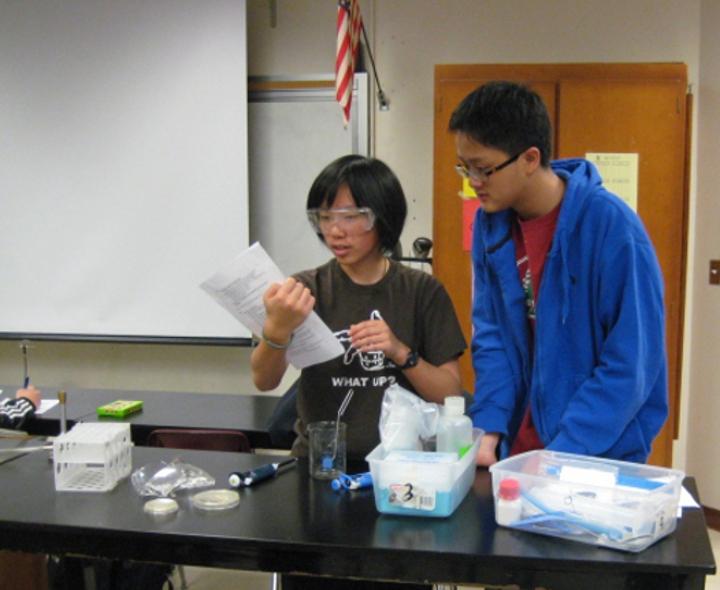
The smell of burning gas fills room B104. No one is panicking, though — it’s just an experiment the Biotech Club is conducting.
Although the club has conducted experiments in the past — including a glowing flowers lab — this particular experiment, involving bacterial resistance to triclosan, is different in the sense that it requires longer commitment and larger-scaled planning. The experiment exposed E.coli to triclosan, an antibacterial agent common in antibacterial cleansers and hand sanitizer, to measure its bacterial resistance. They grew the E.coli cultures themselves, then over nine days, measured how much the E.coli resisted triclosan with the Kirby-Bauer test, a procedure that exposes E.coli to triclosan and examines its growth.
“It’s their first intense ten-day experiment,” club adviser and science teacher Lora Lerner said. “[For the members to show up] everyday, it’s taken a lot of commitment.”
The Biotech Club, founded last year, seeks to apply the information taught in science classes to the field of biotechnology. Some prior activities the club has done to this end include lectures from guest speakers and debates on issues in the scientific community, as well as experiments not usually conducted in the average biology class, like making a glow-in-the-dark slime.
“They get ideas [for labs] on their own,” Lerner said. “It’s not the normal curricula that science classes have.”
According to club president junior Kasie Wong, the idea for this particular experiment rose from a conversation with science teacher Renee Fallon. Her original idea involved the western blot analysis, a method that detects specific proteins in an extract, and from there, came up with the idea for the current experiment. Wong began planning during the fall, most of which included simplifying the idea and coordinating schedules with teachers.
According to Wong, experiments in the past were more general — they usually took one lunchtime, and had less member involvement. The bacterial resistance experiment, in comparison, took nine lunches and had more of a hands-on aspect.
The Biotech Club worked with three different teachers — Lerner, Fallon and science teacher Pamela Chow — to set up the experiment. They borrowed some of the equipment like agar spreaders and bunsen burners, and bought the rest themselves, such as the triclosan used in the experiment.
“I felt like a TA … [since] one-third of the experiment is set-up,” Wong said. “It’s kind of like a scavenger hunt everyday since the equipment is scattered all around.”
Since beginning the experiment on March 16, a group of three or five students had stayed in at lunch in room B104 to work the procedures; members volunteered for shifts to help. Because too many members working on the experiment would be difficult to organize, the officers divided the shifts based on the members’ experience with labs and skills to fit the procedures that were occurring that day. The shifts are organized to be balanced in terms of experience, so members unfamiliar with the lab techniques had AP Biology students familiar with the techniques helping them.
“Originally, I imagined more of a lab where each member was doing a different part,” Wong said. “But we ended up working together … the members tended to work well together.”
The Biotech Club meets every Wednesday at lunch in B104.







